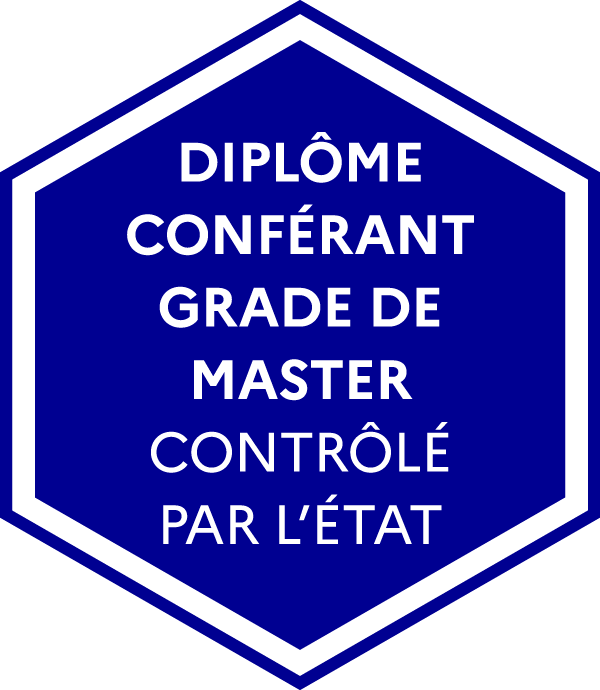Number of hours
- Lectures 46.0
- Projects -
- Tutorials 6.0
- Internship -
- Laboratory works 8.0
ECTS
ECTS 5.0
Goal(s)
To give advanced knowledge of two-phase flows, two-phase thermohydraulics, electrohydrodynamics, magnetohydrodynamics as well as bulk rheology. To provide a background level in using modeling or designing tools for processes involved in a diversity of technological applications: solar or nuclear energy with reactors of 3th generation (ATMEA, EPR), 4th generation (ASTRID) and even 5th generation (ITER), nuclear waste management, oil engineering, food or drug engineering, metallurgy, engineering of many processes involved in sustained environment.
Laurent DAVOUST
Content(s)
This module gathers courses which contribute together to the development of fluid processes at micro and macro scales: two-phase flows (Henda Djeridi), two-phase thermohydraulics (Fabrice Francois), bulk rheology (Laurent Jossic), electro- and magneto-hydrodynamics (Laurent Davoust, Yves Fautrelle and Olivier Doche). Theses courses aims at introducing modern challenges of fluid mechanics, this is to say: complex flows with a second dispersed or stratified phase, non-newtonian flows, multiphysics flows with strong coupling with electrostatics or electromagnetism.
The module is organized according to a lecture series, some of the lectures are mandatory while other ones are optional.
MANDATORY COURSES:
- Two-phase flows (Course: 10H)
Topics: i) dynamics of particles (drag force, deformability, trajectory instabilities, mass added force, Basset (history) force, ii) BBOT equation, iii) lift forces, particle-particle and particle-wall interactions, iv) particle-turbulence interaction, averaged modeling of dispersed two-phase flows.
- Two-phase hydraulics (Courses: 18H, Training sessions: 8H)
i) Two-phase flows in horizontal or vertical ducts with special focus on flooding and flow reversal phenomena, ii) measurement methods in two phase flows (measurement of void fraction, flow rates, phase velocities…), iii) mass and momentum balances in two-phase flows especially in ducts, iv) two-phase balances, surface balances, closure equations in two phase flows with special focus on drift flux and averaged equation-based modeling, v) introduction to heat transfers, boiling, pool boiling, critical heat flux, vi) vapor condensation, films or droplets.
ONE OPTIONAL COURSE TO SELECT AMONG:
- Rheology (Course: 18H, Training sessions: 6H)
1. Recalls on continuum mechanics, Newton and Hooke models.
2. Non-newtonian models: viscoelasticity, thixotropy…,
3. Measurement methods of fluid materials: shear and dilatational rheometry
4. Flow modeling: dimensionless numbers and invariants
5. Constitutive laws for materials processing, linear and non linear domains, rheometry.
- Electro- and MagnetoHydrodynamics (Course: 18H, Training sessions: 6H)
Magnetohydrodynamic (MHD) flows and applications to pumps, agitators, levitators are presented as well as electrohydrodynamics (EHD) and its application to fluid micro-processes such as electro-sprays, electro-osmosis or electro-phoresis.
MHD part: steady MHD flows are distinguished from AC MHD. The basic equations are presented, with particular emphasis on the influence of the Lorentz body force in the Navier-Stokes equations, the conservation of the electric current density. The dimensionless numbers of Hartmann and magnetic Reynolds are introduced. MHD in this course is thought of as weakly coupled (vanishing Reynolds number). Hartmann flows are calculated with a special focus on the electrical activity of the boundary layers which can govern velocity scale in pipe flows. The impact of geometry or magnetic field non-uniformities upon MHD flows is introduced. In the case of AC MHD, the electromagnetic boundary layer, the skin thickness effect and electromagnetic levitation are detailed.
EHD part: The equations of electrohydrodynamics are presented with Gauss's law in volume and fluid interfaces, conservation of electric charge, the balance between mechanical and electrical tensors at interfaces (Taylor-Melcher EHD), and finally electrowetting. Are also presented: the electric double layer thickness and Debye electrokinetics.
Each part is doubled with a training session based on numerical simulations to illustrate most singular properties of MHD or EHD flows.
Fluid mechanics, heat and mass transfers
- Specific credits: this course brings 6.0 ECTS to students in Year 2 Master Fluid Mechanics and Energetics (M2 FME)
Session normale / First session
Evaluation non rattrapable (EN) / EN assessment :
- 1 rapport de BEs en thermohydraulique diphasique / 1 BE report two-phase thermohydraulics
- 1 rapport de BE comsol en EMHD ou bien 1 devoir maison en rhéologie selon choix de l'étudiant / 1 BE comsol report in EMHD or 1 report in rheology according to the student's choice
Evaluation rattrapable (ER) / ER assessment : 3 épreuves écrites de 1h (diphasique, thermohydraulique, EMHD ou Rhéologie selon choix de l'étudiant) / Three one-hour written tests (two-phase flows, two-phase thermohydraulics, EMHD or Rheology depending on the student choice)
Session de rattrapage/ Second session
La note obtenue remplace la note de ER. Le EN n'est pas rattrapable. / The new mark will replace the first one (ER). No resitting for the EN exam.
EN 50% + ER 50%
The exam is given in english only 
The course exists in the following branches:
- Curriculum - Master's Degree in Engineering IEN - Semester 9 (this course is given in english only
 )
) - Curriculum - M2 FME Research - Semester 9 (this course is given in english only
 )
) - Curriculum - Master's Degree in Engineering ME - Semester 9 (this course is given in english only
 )
)
Course ID : 5EUS5MFA
Course language(s): 
You can find this course among all other courses.
Transport Phenomena by Bird, Stewart & Lightfoot)
Low-Re number hydrodynamics by Happel & Brenner
Bubbles, Drops, and Particles by Roland Clift, John R. Grace, Martin E. Weber
Magnetohydrodynamics by Moreau
Electrohydrodynamics by Castellanos
Rheological phenomena in focus, D. V. Boger and K. Walters
Initiation a la rheologie, G. Couarraze et J. L. Grossiord,
Rheophysique des pates et suspensions, P. Coussot et C. Ancey
French State controlled diploma conferring a Master's degree




